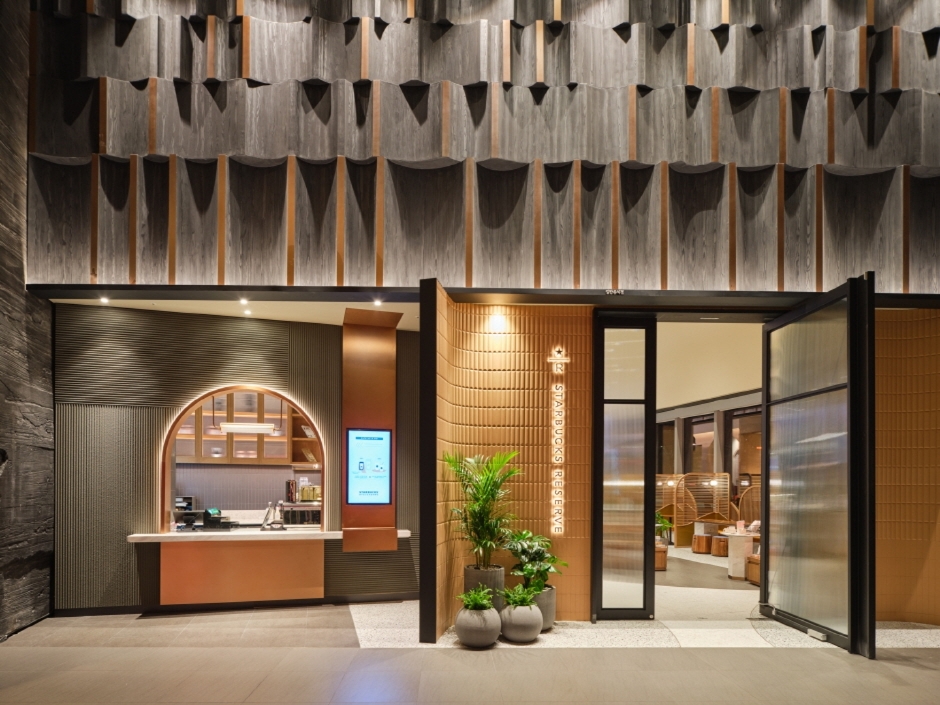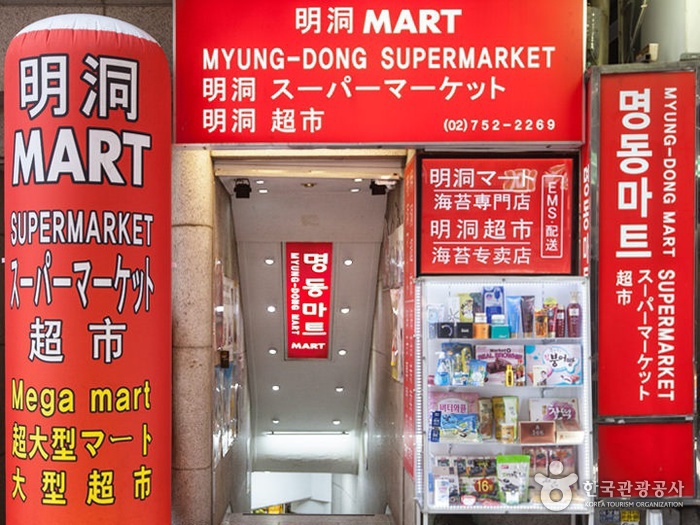Wiseyou Clinic - Myeong-dong Branch [Tax Refund Shop] (와이즈유의원코스메틱 명동)
2.4Km 2024-04-17
3F, 52, Myeongdong 8ga-gil, Jung-gu, Seoul
-
Olive Young - Myeong-dong Station Branch [Tax Refund Shop] (올리브영 명동역)
2.4Km 2024-04-22
127, Toegye-ro, Jung-gu, Seoul
-
Olive Young - Sookmyung Women’s Univ. Branch [Tax Refund Shop] (올리브영 숙대)
2.4Km 2024-04-18
19, Cheongpa-ro 45-gil, Yongsan-gu, Seoul
-
Starbucks Byuldabang (스타벅스 별다방)
2.4Km 2024-12-27
100 Toegye-ro, Jung-gu, Seoul
Byuldabang is a cozy space in the city, where the present and future of Starbucks coexist
Byuldabang is a special name. It combines the Korean words byul, which means stars, and dabang, which means a traditional space where people gather and talk over tea or drink. Byuldabang is the nickname Koreans generally use for Starbucks. Starbucks Byuldabang store opened in appreciation of customers of Starbucks Korea, celebrating its 22nd anniversary. This particular store is a Starbucks Reserve store with new concept food items, and is the first among Starbucks stores worldwide to have digital art wall decorations. The images projected to the art wall are “The Journey of Siren.” It is a surreal journey of Siren, who delivers coffee messages around the ocean, day and night. Customers love the story.
Harmony Mart Myeong-dong Station Branch (하모니마트 명동역점)
2.4Km 2024-12-23
58 , Myeongdong 10-gil, Jung-gu, Seoul
+82-2-752-2269
Harmony Mart Myeongdong Station Branch is a discount supermarket specializing in Korean products popular with foreign tourists. It’s on the 1st basement floor of the Shinil Building annex, just a minute's walk from Exit 8 of Myeongdong Subway Station, Jungu, Seoul. Shop here for kimchi, seaweed, ginseng products, tea, ramen, handicrafts, daily necessities and souvenirs. English, Chinese, and Japanese are spoken, and payments can be made in yen and yuan. With purchases of KRW 50,000 or more, there’s free delivery to accomodations within a 5km radius.
Myeong-dong Mart - Myeong-dong Branch [Tax Refund Shop] (명동마트 명동)
2.4Km 2024-04-18
B1F, 58, Myeongdong 10-gil, Jung-gu, Seoul
-
Reberry Clinic Myeongdong (리베리의원 명동점)
2.4Km 2025-11-28
#201, 2nd Floor & #301, 3rd Floor, 58 Myeongdong 10-gil, Jung-gu, Seoul
1. A dedicated medical director is personally assigned to each client, ensuring responsible and individualized care.
2. We go beyond consultation — every session is a professional medical treatment.
3. With our LifeBiz AI-powered 3D analysis camera, we provide an objective and precise facial assessment.
4. Our treatments are guided by a scientific skin-type classification system for accurate and tailored results.
5. Through 3D facial analysis, pigmentation diagnosis, and skin-type classification, we design a fully customized treatment pathway.
6. At Libery Clinic Aesthetic, we offer not only advanced medical procedures, but also warm décolleté and therapeutic massage care for a holistic experience.
Olive Young - Cheonggu Station Branch [Tax Refund Shop] (올리브영 청구역)
2.4Km 2024-04-18
A section of 1F, 168, Dasan-ro, Jung-gu, Seoul
-
Lf Hazzys - Myeong-dong [Tax Refund Shop] (LF(명동헤지스종합))
2.4Km 2024-04-19
28, Myeongdong 8ga-gil, Jung-gu, Seoul
-
![Samdaein [Tax Refund Shop] (삼대인)](http://tong.visitkorea.or.kr/cms/resource/23/2887823_image2_1.jpg)
![Wiseyou Clinic - Myeong-dong Branch [Tax Refund Shop] (와이즈유의원코스메틱 명동)](http://tong.visitkorea.or.kr/cms/resource/68/2888068_image2_1.jpg)
![Olive Young - Myeong-dong Station Branch [Tax Refund Shop] (올리브영 명동역)](http://tong.visitkorea.or.kr/cms/resource/27/2878627_image2_1.jpg)
![Olive Young - Sookmyung Women’s Univ. Branch [Tax Refund Shop] (올리브영 숙대)](http://tong.visitkorea.or.kr/cms/resource/25/2889625_image2_1.jpg)


![Myeong-dong Mart - Myeong-dong Branch [Tax Refund Shop] (명동마트 명동)](http://tong.visitkorea.or.kr/cms/resource/30/2878630_image2_1.jpg)

![Olive Young - Cheonggu Station Branch [Tax Refund Shop] (올리브영 청구역)](http://tong.visitkorea.or.kr/cms/resource/39/2878739_image2_1.jpg)
![Lf Hazzys - Myeong-dong [Tax Refund Shop] (LF(명동헤지스종합))](http://tong.visitkorea.or.kr/cms/resource/55/2878655_image2_1.jpg)
 English
English
 한국어
한국어 日本語
日本語 中文(简体)
中文(简体) Deutsch
Deutsch Français
Français Español
Español Русский
Русский